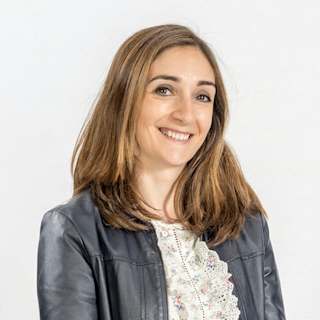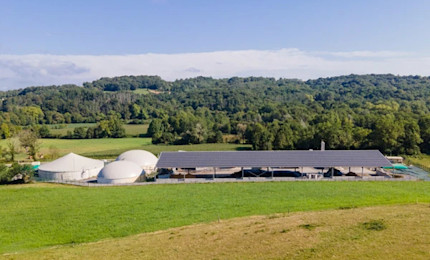Urgence gaz 0 800 028 800

REPower EU: Europe seeks to take control of its energy independence
Rapidly reducing Europe’s dependence on Russian fossil fuels and accelerating the ecological transition: that is the ambition of the REPowerEU plan, launched in the Spring of 2022 by the European Commission. In line with all operators across the French gas sector, Teréga is gearing up to help achieve those targets, by stepping up the work it has already launched to help the energy transition and energy independence across the territories.
REPower EU: Reinventing the European Union’s sovereignty over energy
Against a tense political backdrop, the European Union is looking to put an end to all gas supplies from Russia by 2030. “If we’re to reach that target as quickly as possible, we have to find alternative supplies, and that’s the whole challenge of the REPowerEU plan,” explains Marie-Claire Aoun, Teréga’s Director of Strategy and Institutional Relations. “The first thing to do will be to optimise natural gas supplies from other sources, but in the medium term the solution lies in strengthening areas of the renewables sector, such as biomethane and hydrogen.”
Levers operating on multiple levels
Before even thinking about alternative supplies, REPowerEU is counting on energy efficiency and frugality efforts being made by member states. The European Union adopted last July a note with coordinated measures between member states to reduce the European Union gas demand.The REPowerEU plan also sets out the intention to review energy storage policies, to ensure that reserves are full, especially in preparation for the winter.
“Next comes the question of substitute resources,” continues Marie-Claire Aoun. “First of all, we could make more use of liquefied natural gas (LNG), which can be delivered to Europe via the existing LNG tanker terminals. REPowerEU provides for proposed new floating LNG terminals (FSRUs) to be brought into service close to consumption areas, particularly in Germany.
In addition, it’s also possible to receive gas by pipeline from exporting countries such as Algeria or Azerbaijan, but the volumes involved would remain smaller. Having said that, all these options would provide short term solutions. Renewable energy is the future. Between now and 2027, we need to mobilise our biomethane production potential and, in the longer term, we need intensive development of the hydrogen sector. These are two sectors where Teréga has a role to play.”
REPower EU brings a different approach to the energy transition
The current energy transition targets have clearly been thrown into disarray by the present situation. These developments will, unfortunately, delay political decisions execution for the phasing out of fossil fuels like coal, particularly in Germany. However, REPowerEU has particular plans for boosting renewable energy, and here the targets set are even more ambitious than those previously announced under the “Fit for 55” plan, which already aimed to reduce net greenhouse gas emissions by at least 55% by 2030.

Europe mobilises
To reach the REPowerEU targets, the European Union has announced additional investment of 210 billion euros by 2027, for the gradual elimination of Russian fossil fuel imports, and a number of countries have announced state support for the development of renewables.
In France, 5 to 7 billion euros are on the table to develop hydrogen technology, its production and use in industry and for transport. The major energy players are also working to pool their resources and build the supply networks of tomorrow.
Teréga: driving the acceleration
The increased targets for biomethane and hydrogen development cannot be separated from the rollout of the infrastructure to support them. This is a field in which Teréga will step up its action plans even further: “For biomethane, the technology has reached maturity. We simply need to release that potential,” says Marie-Claire Aoun. “In France, we already have a whole connection and state subsidy mechanism in place to support the rollout of these solutions. Our Long Term Energy Schedule (PPE) provides for 7 to 10% of gas consumption being fulfilled by biomethane by 2030. To reach the REPowerEU target, namely 35 bcm per year, the challenge will be to speed up that movement even more.”
Where hydrogen is concerned, infrastructure development will be one of the main levers for acceleration in the sector. “This is a new approach, because the hydrogen market is still in its infancy, and so we need to plan ahead and planify with infrastructures in order to be able to link the production and consumption areas and achieve economies of scale,” Marie-Claire Aoun notes.
Studies are currently under way to convert some of the existing gas infrastructure to transport hydrogen. With the progressive drop in gas consumption being made possible by energy efficiency, the conversion of existing pipelines will allow the hydrogen network to be built more quickly. “This means the European Hydrogen Backbone, the future network extending over 27,000 km by 2030 and 58,000 km by 2040, will consist of 60% converted gas infrastructure, and only 40% of it will be new pipelines,” Marie-Claire Aoun stresses. “This is a win-win plan, both speeding up its construction and minimising the cost to the consumer.”
Our expert: biography
Marie-Claire Aoun is Teréga’s Head of the Strategy and Institutional Relations Department since 2021, she has chaired the European Gas for Climate consortium. Having received a doctorate in Economic Sciences from Paris Dauphine University (2008), Marie-Claire Aoun worked as an operations manager for the Energy Regulation Commission between 2008 and 2014, before becoming Director of the Energy and Climate centre of the French Institute of International Relations (LFRI) between 2014 and 2017. She also teaches in Energy and Geopolitics at Paris Dauphine University and Sciences Po, Paris.









